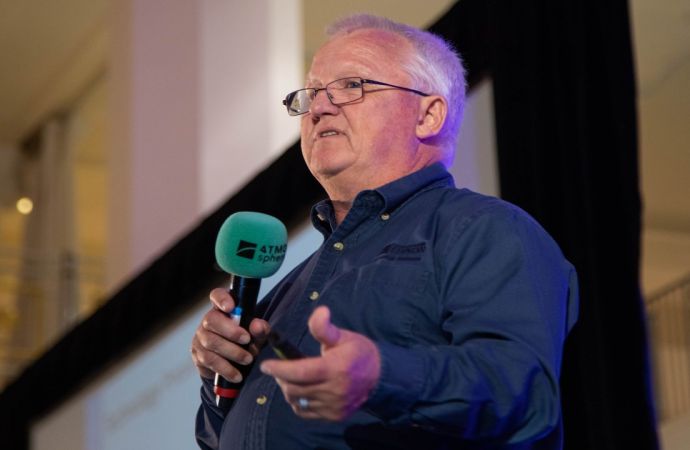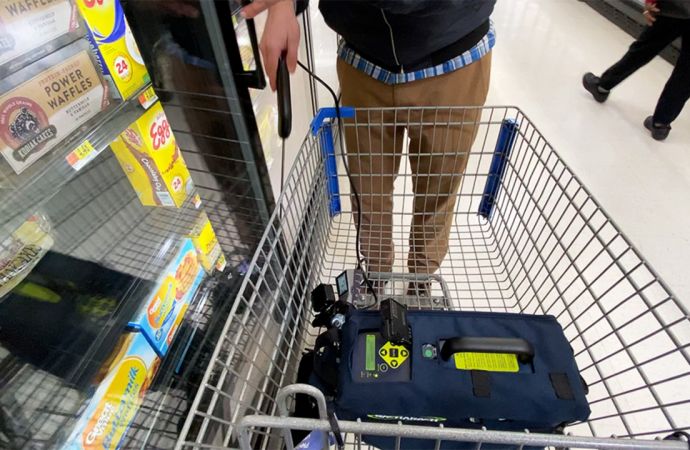In June 2015, China’s Foreign Economic Cooperation Office (FECO) published ‘The First Catalogue of Recommended Substitutes for HCFCs” with the list of natural substitutes – including CO2, ammonia, hydrocarbons and water – indicating a significant shift in mindset towards a sustainable HVAC&R industry in China.

hydrocarbons21.com talked with Zhong Zhifeng of FECO about the objectives of the Catalogue and the impact it could have on the heating and cooling industry in China with the nation’s unrelenting economic growth requiring innovative solutions in all sectors to address climate change.
Vice Chief of Division III, Zhifeng, intimated that as soon as policy and standards shift towards natural refrigerants, the nation will see an explosion of interest and demand for natural refrigerant technology. FECO, an agency attached to China’s Ministry of Environmental Protection, listed natural refrigerants as recommended alternatives to HCFCs for almost every application.
Steering away from an industry heavily reliant on fluorinated gases like R22, R134a and R410A will now be the key for China but Zhong said the adoption of CO2 and hydrocarbon technology for a wider array of applications would rely on increased production and competition between manufacturers and a revision international safety standards, especially IEC and ISO.
ammonia21.com: Could you explain how this list of substitutes was established and what have been the factors for including almost exclusively natural refrigerants for the listed applications?
Zhong Zhifeng: When we considered this list we studied the trends – nationally and internationally. The environment has also been one of the most important principles for us. Most of the recommended alternatives listed are medium to long-term, not short-term solutions. The catalogue aims to encourage enterprises to do more research on such applications and refrigerants. We think HFCs, especially high-GWP refrigerants are relatively short-term solutions - or ‘transition technology’ - and this is why we did not put any high-GWP refrigerants in the list.
We had an expert team to help us establish the catalogue and a very important principle was that there should be some successful examples or demonstration projects using the technology in China. Even if it is used widely in other countries, but there are no examples in China we did not include it in the list. Moreover, technologies that have a good potential are not listed either.
ammonia21.com: What is the role of this catalogue of recommended substitutes and how do you expect this to influence the market for natural refrigerants in China?
Mr. Zhifeng: This catalogue should serve as a guideline especially for domestic manufacturers, but also for consumers and policy makers in the long term.
ammonia21.com: Is there a plan to put forward some concrete policies that would promote the technologies included in the list?
Mr. Zhifeng: The list is voluntary, not mandatory for the industry. Policy will be the next step, but so far we have not done any impact assessment of possible measure on greenhouse gas reduction or economy.
We have to follow the decisions (from the government) but maybe in the next one or two years some of the applications in the list will be considered to be promoted when more analysis is completed.
For example, for residential air conditioners natural refrigerants already have some share of the market and now the government is considering some policies to regulate and promote the technology.
ammonia21.com: Is there a review foreseen for this catalogue whereby more applications could be added?
Mr. Zhifeng: Of course. Actually in our work plan we are considering adding more applications or deleting some, the catalogue is open. We are open to make changes once there are some examples or demonstration projects in China.
When we considered this catalogue, for example R290 (propane) for water chiller heat pumps has already been widely used outside of China. This is a very good solution and we think it has the potential to be used in China, however, at the moment we don’t have any installations of this technology in China. If this changes, we can add the technology to the list.
ammonia21.com: What would be your advice to foreign companies looking to invest in the Chinese market in the field of natural refrigerant technology? Are there any frameworks in China that could encourage such companies to come and invest in these technologies.
Mr. Zhifeng: I think this is the best timing for investment in environmentally friendly technologies, such as those using natural refrigerants. Our government is now promoting eco-civilisation including the environmental protection and we also treat eco-civilisation as sustainable development. There are a lot of policies to support this new concept. For example, only a few months ago the central government drafted a plan on the update of the manufacturing capacities until 2025, based on which more focus will be put on energy efficient technologies.
I would also like to recommend the International Platform for Environmental Technology (3iPET.mepfeco.org.cn), which provides comprehensive support to international organisations looking to invest in advanced sustainable technology in China, such as finding investors and local governments that would welcome the new technology.
ammonia21.com: What are your expectations regarding the deployment of ammonia and hydrocarbon technology in China in the next five years? Which applications listed have the highest potential for growth?
Mr. Zhifeng: Ammonia in cold storage is already widely used in China and all over the world - this will be a very important sector also for the future. It is already established and I think the market will choose ammonia for cold storage facilities, especially for the very large ones.
A very important field for ammonia systems is minimising the size of compressors. If you can minimise the size of the compressor then you can use it not only in cold storage but also in the whole cold chain – transportation, food processing, storage, distribution etc. At the moment there are not many examples of these applications in the world, but the scientists and manufacturers are working on this. Small ammonia applications have a huge potential because the cold chain in China is very far away from the advanced development stage and the government is paying a lot of attention to this. We found that the compressors currently used in the cold chain rely on very high-GWP refrigerants, which is not sustainable at all.
I hope that in the next few years there will be some good progress with development of smaller size ammonia compressors, for example in transport refrigeration. The actual development depends on the actions by the manufacturers, universities and other players, but we encourage this as it has a very good potential.
Implementing hydrocarbons in China
Mr. Zhifeng: In five years, R290 air conditioners will definitely be rolled out into the Chinese market. There will be enough demand to sustain this as commercially viable technology.
There is also a high potential for R290 water chillers, where the hydrocarbon unit is placed on rooftops and water circulates in buildings. I think by 2020 manufacturers will have finished the development of R290 water chillers in China and the technology will be ready for production.
This technology has been widely used in Europe especially as a result of favourable European standards as compared to IEC and ISO standards, which are much more unreasonable restricting. The IEC is a little more open but it still needs to be revised to allow for the use of hydrocarbons. The precondition for adoption of natural refrigerant technology is that we need to have better standards to ensure the safety - this is the most important aspect. From my respective, the most important issue for the safety standard is to regulate the measures to ensure the safe production, usage, servicing and disposal. In addition, standards need to be improved to also to help the natural refrigerant technology come faster to the market.
MORE INFORMATION
Related stories



